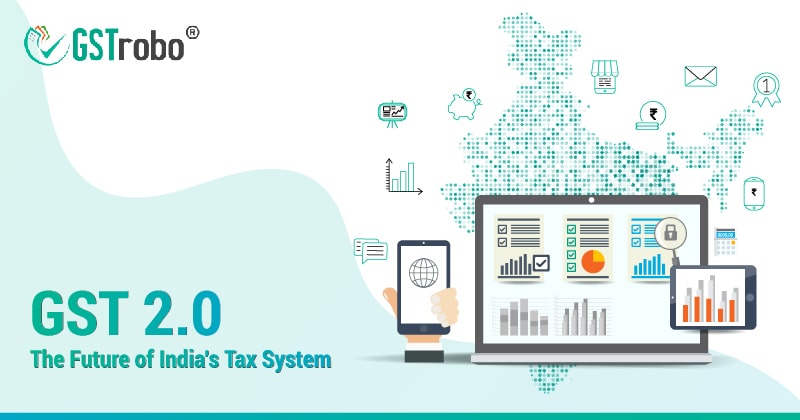GST 2.0: The Future of India’s Tax System
Introduction
The Goods and Services Tax (GST) has brought significant changes to India’s tax system since it was introduced on July 1, 2017. It replaced multiple indirect taxes imposed by the central and state governments, making taxation simpler and promoting economic integration. Looking ahead, GST 2.0 is the next phase of this transformative tax system.

Simplifying and Making Taxes Fairer
GST 2.0 aims to simplify and improve the existing tax structure. Although progress has been made, there are still challenges to address. The government plans to reduce the number of tax slabs and make it easier for businesses to comply with GST rules. This simplification will not only lower compliance costs for businesses but also help taxpayers understand and follow the tax laws more easily.
Using Technology for Better Tax Administration
GST 2.0 will embrace technology to enhance the efficiency of tax administration. Advanced technologies like artificial intelligence (AI), machine learning (ML), and blockchain can automate various processes such as registration, return filing, and invoice matching. By leveraging technology, the government can minimize errors, reduce manual work, and increase transparency, making the tax system more robust.
Including Petroleum and Alcohol in GST
Currently, petroleum products and alcohol for human consumption are not part of the GST system. However, bringing them under GST can eliminate overlapping taxes and simplify the overall tax structure. This inclusion would create a level playing field for businesses in these sectors and reduce the burden on consumers by eliminating multiple taxes.
Expanding the Tax Base
GST 2.0 will focus on expanding the tax base to ensure more people comply with the tax regulations, generating higher revenue. Introducing a comprehensive e-invoicing system and real-time reporting mechanisms can help identify tax evaders and improve compliance. Efforts can also be made to bring more sectors, like real estate and electricity, into the GST system, broadening the tax base and reducing the burden on existing taxpayers.
Addressing Input Tax Credit Challenges
The input tax credit (ITC) mechanism in GST has faced difficulties in reconciling and matching invoices. GST 2.0 aims to address these challenges and ensure a smooth flow of ITC throughout the supply chain. Automation and technology solutions will streamline the ITC process, minimizing errors, and reducing disputes between taxpayers and tax authorities.
Harmonizing Tax Rates
To promote consistency and ease of compliance, GST 2.0 will work towards harmonizing tax rates for goods and services. Currently, different items are taxed at different rates, leading to confusion and disputes. By standardizing tax rates, the government can simplify the tax structure, reduce litigation, and create a more predictable business environment.
Conclusion
GST 2.0 represents the future of India’s tax system. Through simplification, technology-driven implementation, an expanded tax base, and addressing key issues like input tax credit and tax rate harmonization, the government aims to strengthen GST’s effectiveness and boost economic growth. Inclusion of petroleum and alcohol, along with other measures, will contribute to a streamlined and efficient tax system. Embracing GST 2.0 will play a crucial role in realizing the vision of a simplified, transparent, and progressive tax regime that supports India’s growth and development aspirations.
